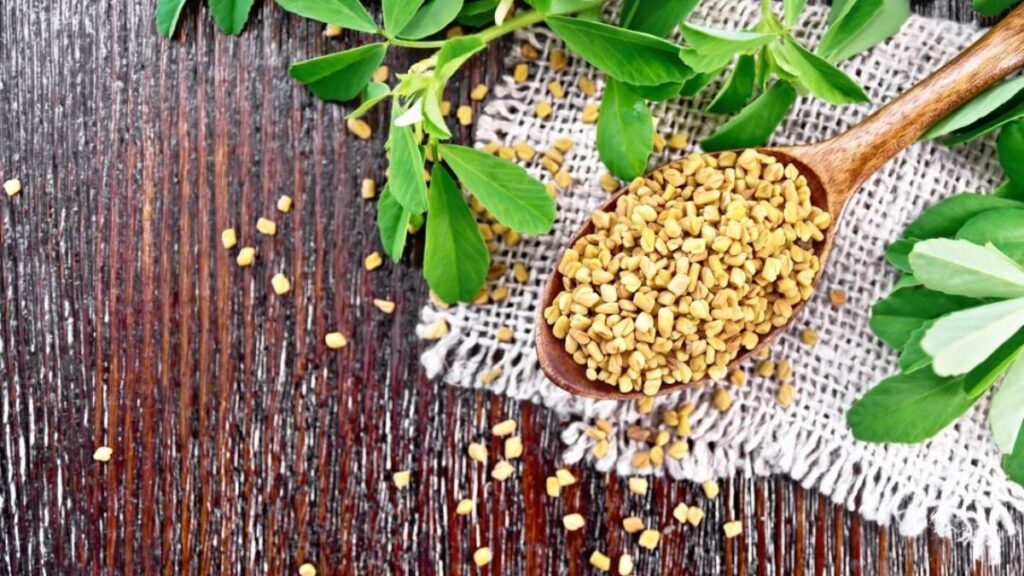Are you looking to elevate your gardening skills while adding a nutritious twist to your meals? Foenegriek, also known as fenugreek, might just be the perfect herb for you. Not only does it bring a unique flavor to dishes, but it’s also packed with health benefits that can boost your well-being. Imagine stepping into your garden and harvesting fresh foenegriek seeds or leaves whenever you need them. How rewarding would that be? Let’s dive into the world of foenegriek: from growing and caring for this versatile plant to delicious recipes that make use of its distinctive taste! Whether you’re an experienced gardener or just starting out, you’ll find something valuable in this guide.
What is Foenegriek and its Health Benefits
Foenegriek, or fenugreek, is a fragrant herb with origins in the Mediterranean region. Its distinctive leaves and seeds are used in various cuisines around the world, adding depth to both savory and sweet dishes.
Rich in vitamins and minerals like iron, magnesium, and vitamin B6, foenegriek offers numerous health benefits. It’s known for its ability to aid digestion, making it a popular choice for those seeking natural remedies.
Additionally, this powerful herb can help regulate blood sugar levels. Some studies suggest that foenegriek may support weight management by enhancing metabolic rates.
The anti-inflammatory properties of foenegriek also deserve attention. They can assist with conditions such as arthritis or muscle pain when incorporated into your diet regularly. With such an impressive nutritional profile and myriad uses, it’s no wonder gardeners are eager to grow their own foenegriek at home!
How to Grow Foenegriek in Your Own Garden
Growing foenegriek in your garden is a rewarding endeavor. This versatile herb thrives in well-drained soil and needs plenty of sunlight. Choose a spot that gets at least six hours of direct sunlight each day.
Start by sowing the seeds directly into the ground, about one inch apart. If you’re using containers, make sure they are deep enough for root development. Water gently to keep the soil moist but not soggy.
Foenegriek grows best in warm temperatures. Ideally, plant it during late spring or early summer when conditions are just right. Thin out seedlings as they grow to ensure good airflow between plants.
Regularly check for pests like aphids or fungal issues. Keeping an eye on your plants will help them thrive and yield healthy growth throughout the season. Enjoy watching them flourish!
Tips for Caring and Maintaining Foenegriek Plants
Caring for your foenegriek plants is crucial for a bountiful harvest. First, ensure they get plenty of sunlight. Foenegriek thrives in well-drained soil and needs at least six hours of direct sunlight daily.
Watering should be moderate. Avoid overwatering, as this can lead to root rot. Aim to keep the soil slightly moist but not soggy.
Regularly check for pests such as aphids or spider mites. If you notice any signs, use natural insecticides or neem oil for treatment.
Fertilizing your plants can boost growth and yield. Use an organic fertilizer rich in nitrogen every few weeks during the growing season.
Pruning is also beneficial; remove any dead or yellow leaves to encourage healthy new growth and improve air circulation around the plant’s base. These small efforts will help maintain strong, productive foenegriek plants throughout their growing cycle.
Harvesting and Storing Foenegriek Seeds
Harvesting foenegriek seeds is a rewarding process. Wait until the pods turn brown and dry on the plant. This indicates that they are ripe and ready for collection.
Use scissors or garden shears to cut the stems gently. Place them in a paper bag or container to catch any falling seeds during handling.
Allow the pods to dry further in a warm, airy spot for about a week. Once dried, you can easily open the pods by hand, revealing small, aromatic seeds inside.
For storage, keep your harvested seeds in an airtight container. A glass jar works well; label it with the date for reference later on. Store it in a cool, dark place to maintain freshness.
Properly stored foenegriek seeds can last for several years without losing potency or flavor. Enjoy having this herb at your fingertips whenever you need it!
Delicious Recipes Using Foenegriek
Foenegriek adds a lovely depth of flavor to various dishes. Try incorporating its seeds into your spice blends for a warm, slightly nutty taste.
A popular way to use foenegriek is in curries. It pairs exceptionally well with lentils and vegetables, enhancing the overall richness.
For breakfast lovers, consider adding crushed foenegriek seeds to oatmeal or smoothies. The subtle crunch and unique flavor elevate simple meals into something special.
Another delightful option is homemade bread. Mixing ground foenegriek into the dough creates an aromatic loaf that’s perfect for sandwiches or toast.
Don’t overlook salads! Toasted seeds sprinkled over fresh greens can provide an interesting texture and earthy taste that surprises your palate.
Experimenting with these ideas opens up new culinary adventures while enjoying the numerous benefits this remarkable herb offers.
Other Uses and Benefits of Foenegriek
Foenegriek, or fenugreek, is a versatile herb that goes beyond the kitchen. Its seeds are rich in fiber and nutrients, making them beneficial for digestive health. Many people use foenegriek to help manage blood sugar levels.
In skincare, foenegriek has gained popularity due to its anti-inflammatory properties. A paste made from soaked seeds can soothe skin irritations and reduce acne.
Additionally, this herb serves as a natural remedy for boosting milk production in breastfeeding mothers. It’s often recommended by lactation consultants as a supportive supplement.
Beyond its medicinal uses, foenegriek acts as an excellent organic fertilizer when composted. It enriches soil with nitrogen and promotes healthy plant growth.
Whether you’re using it for health benefits or enhancing your garden’s productivity, foenegriek proves to be an invaluable addition to any home setting.
Conclusion
Growing and harvesting your own foenegriek can be a rewarding experience. This versatile plant not only enhances your meals but also contributes to your health. By following the steps outlined above, you’ll have fresh foenegriek at your fingertips.
Whether you choose to sprinkle its seeds on dishes or brew them into teas, the possibilities are endless. The benefits of cultivating this herb extend beyond just culinary uses; it connects you with nature and adds beauty to your garden.
So why wait? Start growing foenegriek today, enjoy its numerous advantages, and transform your cooking with this remarkable ingredient. Your journey towards home gardening is sure to be fulfilling.






![Why Kibard is a Must-Read for [Target Audience]](https://gool24.net/wp-content/uploads/2025/12/Kibard-150x150.jpg)